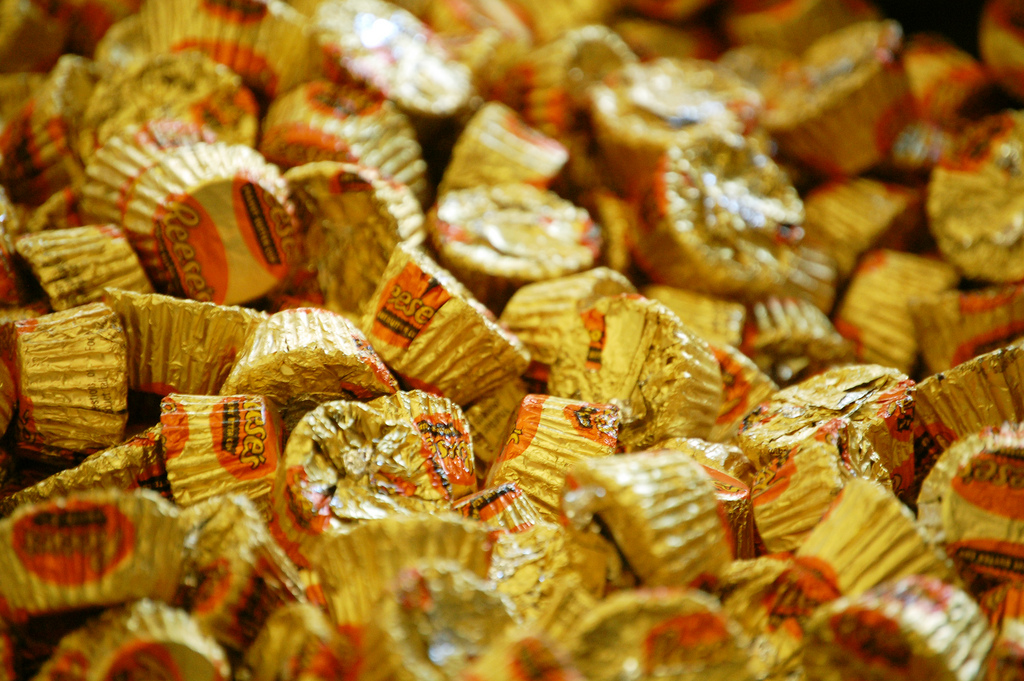If you’re reading this, I’ll assume you’ve had a Reese’s peanut butter cup at least once in your lifetime. I mean, who hasn’t? Not only are they available year round, they also come in fun shapes around the holidays. Do Reese’s trees and Reese’s eggs sound familiar? If you’re a fan of the popular peanut butter cups, your mouth is probably salivating right about now. Unfortunately, a deeper look into Reese’s ingredients might make you question that last minute purchase at the checkout line. As delicious as they are, Reese’s peanut butter cups can be detrimental to your health.
A Little Background
Reese’s peanut butter cups were invented in 1928 by Mr. Reese. He was a farmer and a shipping foreman for Milton S. Hershey. After inventing the sweet treat, Mr. Reese decided to quit the dairy farming business and start his own candy company in his basement. And the rest is history.
Reese’s peanut butter cups come in many different shapes, sizes and varieties. Although the chocolate to peanut butter ratio seems like perfection, the other ingredients in the popular candy are cause for concern.

Ingredients In Reese’s Peanut Butter Cups
Ingredients include: Milk chocolate, (milk, chocolate, sugar, cocoa butter, chocolate, no fat milk, milk fat, lactose, soy lecithin, PGPR), peanuts, sugar dextrose, salt, TBGQ and citric acid.
The most questionable ingredients are:
1. Soy Lecithin
Research has shown that as much as 93% of soy is genetically modified. Soy lecithin has been found to have detrimental effects on fertility and reproduction. It can cause behavioral and cerebral abnormalities. It has also been linked to breast cancer.
2. PGPR
PGPR is short for polyglycerol polyricinoleate. The manufacturer of this popular candy replaced cocoa butter with PGPR to lower the cost of production. PGPR comes from castor beans and it’s used to reduce the viscosity of chocolate. It has been connected to gastrointestinal problems and allergic reactions in children.
3. TBHQ
TBHQ stands for tertiary butylhdroquinone. It’s derived from petroleum and can be extremely toxic. Side effects of ingesting TBHQ include nausea, vomiting, ringing in the ears, delirium and collapse. Research has shown that TBHQ can damage the lungs and umbilical cells in humans. It can also cause stomach cancer. Children who are exposed to this chemical may show anxiety, restlessness and intensified ADHD symptoms.

Make Your Own Organic Peanut Butter Cups
There’s no debating the delicious taste of Reese’s peanut butter cups. But do you really want to risk the potential health effects by eating them, or feeding them to your children? If peanut butter cups happen to be one of your favorite treats, there are safer ways eat them without putting your health at risk! Look for organic peanut butter cups at health food stores, or make your own! Here’s how:
Ingredients
- 12 muffin tin liners
- 12 ounces of organic dark chocolate
- 1 cup of organic peanut butter
- 1/4 cup of raw honey
- 1/4 teaspoon of organic salt
Directions
- Make the muffin cups more shallow by trimming them.
- Using a small saucepan, melt the chocolate on low heat while stirring continually. Leave it on for 1-2 minutes and be careful not to overcook.
- Using a teaspoon, put chocolate portions into the muffin cups.
- Place the whole muffin tin into the fridge to solidify.
- In a medium bowl, mix the organic peanut butter, raw honey and salt.
- Once the chocolate in the fridge has hardened, heat the peanut butter in a small saucepan over low heat to soften it.
- Put a small portion of peanut butter into each of the chocolate-coated cups leaving some room at the top for another layer of chocolate.
- Store the cups in the fridge for 10 minutes, then spread and flatten the peanut butter.
- Put the cups back in the fridge for 1 hour or until the peanut butter hardens.
- When the peanut butter is ready, rewarm the remaining chocolate and add a layer to the top of each candy.
- Cool it once again in your fridge until the chocolate hardens.
- Enjoy!
Watch the video to learn how to make a vegan-friendly version!
Sources:
Healthy Food Team
Mr. Healthy Life
Dr. Axe
Try Living Organic
Natural News


